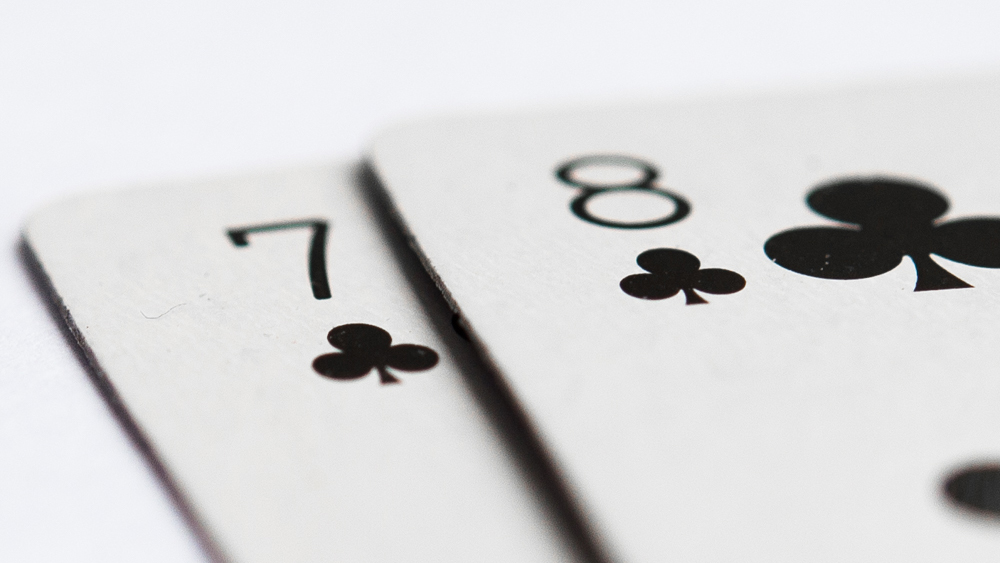13 Plus (13+) Common Entrance Mathematics Syllabus
Introduction
The majority of students admitted to Independent School at 13 Plus will follow the Independent Schools Examination Board (ISEB) syllabus. Some students gain admission via the Scholarship route, either through the seperate ISEB syllabus (the Common Academic Scholarship Examination, or CASE) or through the school’s own Scholarship papers. A further number of schools set their own papers for regular admission, scholarship admission or both.
The purpose of this article is to explain the requirements for the 13 Plus Maths ISEB syllabus, both for Common Entrance (CE) and CASE. Schools using their own papers for admission usually make past papers available via their website.
Basics
Mathematics (we’ll call it Maths from this point) is a core subject at CE and CASE, alongside English and Science. All students will sit examinations in Maths.

Papers will be sat in the June of Year 8. Students will sit two papers, each 60 minutes long. There is also a mental paper, which lasts 30 minutes. This consists of students answering a series of questions from an audio recording.
Levels in 13 Plus Maths – who sits which paper?
Students are split into three levels for CE Maths: Level 1, Level 2 and Level 3. All students sit the mental arithmetic paper. Each level requires two papers, a calculator and a non-calculator paper.
It is expected that most students will sit Level 2. Schools will base their offers on expected performance on a set paper. For example, School A might ask for a score of 65% on the Level 2 Maths papers, whereas School B might ask for a score of 55% on the same papers.
The ISEB specifies that Level 1 papers are for students who would likely score below 35% on the Level 2 papers, whilst Level 3 is for students who are achieving above the expected standard and working through the specified extension material (more on this later).
The CASE examination consists of a single 90 minute paper, following the ISEB extended 13+ syllabus.
13 Plus Maths Syllabus: an overview
Students will be tested in four major areas:
- Number
- Algebra
- Ratio and proportion
- Geometry
- Statistics and Probability
Each of these are then helpfully broken down by the ISEB into specific National Curriculum targets. The full ISEB 11 & 13 Plus Maths syllabus can be found here (opens in new window). In the case of 13 Plus Mathematics, this document quotes directly from Key Stage three targets as set by the Department for Education, as outlined in this document (opens in new window).

13 Plus & Common Entrance Maths syllabus: Number
Each of the below 13 Plus objectives for Number are National Curriculum descriptors for Key Stage 3 Mathematics, as published by the Department of Education (opens in new window).
- “Understand and use place value for decimals, measures and integers of any size”.
- “Order positive and negative integers, decimals and fractions; use the number line as a model for ordering of the real numbers; use the symbols =, ≠, <, >, ≤, ≥”.
- “Use the concepts and vocabulary of prime numbers, factors (or divisors), multiples, common factors, common multiples, highest common factor, lowest common multiple, prime factorisation, including using product notation”. (NB – HCF / LCM is “tested implicitly” at Levels 1 and 2, then “tested explicitly” at Level 3 and CASE).
- “Use the 4 operations, including formal written methods, applied to integers, decimals, proper and improper fractions, and mixed numbers, all both positive and negative”. (NB – Levels 1 and 2 specify that “calculations with negative numbers will be restricted to integers”. At Level 3 and CASE, “calculations will be with the full range of numbers”).
- “Use conventional notation for the priority of operations, including brackets, powers, roots and reciprocals”. (NB – for all levels, “reciprocals will be described in the form 1 / ? and not ?^-1”).
- “Recognise and use relationships between operations including inverse operations”. (NB – for all levels, “inverse operations will be numerical only”).
- “Use integer powers and associated real roots (square, cube and higher), recognise powers of 2, 3, 4, 5 and distinguish between exact representations of roots and their decimal approximations”. (NB – at level 1, square roots and simple powers are tested. At Level 2, square roots, cube roots and powers up to 5 are tested. At Level 3 and CASE, students should also understand that some roots are irrational, for example that the root of 4 is not exactly 1.4).
- “Interpret and compare numbers in standard form A x 10n 1≤A<10, where n is a positive or negative integer or 0”. Standard form is only assessed at Level 3 and CASE, not Levels 1 and 2.
- “Work interchangeably with terminating decimals and their corresponding fractions (such as 3.5 and or 0.375 and 3/8)”. At Level 1, only simple numbers will be used.
- “Define percentage as ‘number of parts per hundred’, interpret percentages and percentage changes as a fraction or a decimal, interpret these multiplicatively, express 1 quantity as a percentage of another, compare 2 quantities using percentages, and work with percentages greater than 100%”. At Level 1, percentages are less than 100%. At Level 2, percentages over 100% are “simple”, e.g. 125%.
- “Interpret fractions and percentages as operators”.
- “Use standard units of mass, length, time, money and other measures, including with decimal quantities”.
- “Round numbers and measures to an appropriate degree of accuracy [for example, to a number of decimal places or significant figures]”. At Level 1, significant figures are not used. At all levels, “precise instructions will be given to candidates”.
- “Use approximation through rounding to estimate answers”.
- “Use a calculator and other technologies to calculate results accurately and then interpret them appropriately”. For Level 1 up, “+, – , × , ÷ , 1/x , x2 , x3 and π functions are required”.
13 Plus & Common Entrance Maths syllabus: Algebra
Each of the below objectives for Algebra are National Curriculum descriptors for Key Stage 3 Mathematics, as published by the Department of Education (opens in new window).
1. “Use and interpret algebraic notation, including:
- ab in place of a × b
- 3y in place of y + y + y and 3 × y
- a² in place of a × a, a³ in place of a × a × a; a²b in place of a × a × b
- ? / ? in place of a ÷ b
- coefficients written as fractions rather than as decimals
- brackets”
2. “Substitute numerical values into formulae and expressions”.
3. “Understand and use the concepts and vocabulary of expressions, equations, inequalities, terms and factors”.
4. “Simplify and manipulate algebraic expressions to maintain equivalence by:
- collecting like terms
- multiplying a single term over a bracket
- taking out common factors
- dividing an expression by an integer or by another expression”
5. “Understand and use standard mathematical formulae”. At Level 1, formulas will be simple, and simple substitution will be used to find the formula subject. At Level 2, substitution will be used to find the subject of the formula. At Level 3, substitution will be needed to find part of a formula, and re-arrangement of the numbers may be required.
6. “Model situations or procedures by translating them into algebraic expressions or formulae and by using graphs”. At Levels 1 and 2, this may lead to a linear equation needing to be made and solved. At Level 3, this may lead to simultaneous equations.
7. “Use algebraic methods to solve linear equations in 1 variable (including all forms which require rearrangement)”.
8. “Use algebraic methods to solve linear equations in 2 variables”. This will only be tested at Level 3.
9. “Work with coordinates in all 4 quadrants”. At Level 1, the co-ordinates will only have integer values. At Level 2, decimal answers may be read from graphs.
10. “Recognise, sketch and produce graphs of linear and quadratic functions of 1 variable with appropriate scaling, using equations in x and y and the Cartesian plane”. At Level 1, this will only be in the form of x = ± c, y = ± c or y = ± x only. At Level 2, this will only be graphs of linear functions. At Level 3 and CASE, this will involve graphs of linear and quadratic functions.
11. “Interpret mathematical relationships both algebraically and graphically”.
12. “Use linear and quadratic graphs to estimate values of y for given values of x and vice versa and to find approximate solutions of simultaneous linear equations”. At Level 1, only linear graphs will be tested. At Level 2, “the use of intersecting graphs to find solutions to simulatenous equations will only be implicit”. At Level 3 and CASE, this might be two linear graphs or a combination of a linear and a quadratic graph. This may also involve graphic solutions to simultaneous equations.
13. “Find approximate solutions to contextual problems from given graphs of a variety of functions, including piece-wise linear graphs”. These are likely to be conversion or distance-time graphs.
14. “Generate terms of a sequence either from a term-to-term or a position-to-term rule”.
15. “Recognise arithmetic sequences and find the nth term”. At Level 1, this will only be for “simple patterns”. At Level 2, the nth term will be “useful”, whereas at Level 3 the nth term is required.
16. “Recognise geometric sequences and appreciate other sequences which arise”. Below CASE, this is likely to be simple recognition work. At CASE, this will involve algebraic understanding of finding equations for sequences.
At Level 3 and CASE, the additional two NC objectives will be tested in Algebra:
17. “Solving simple linear inequalities”.
18. “Solving simple quadratic equations”.
13 Plus & Common Entrance Maths syllabus: Ratio, proportion and rates of change
- “Change freely between related standard units [for example time, length, area, volume/capacity, mass]”.
- “Use scale factors, scale diagrams and maps”.
- “Express 1 quantity as a fraction of another, where the fraction is less than 1 and greater than 1”. For Level 1, “fractions will be straightforward”.
- “Use ratio notation, including reduction to simplest form”.
- “Divide a given quantity into 2 parts in a given part:part or part:whole ratio; express the division of a quantity into 2 parts as a ratio”. For Level 2, Level 3 and CASE this will include division into 3 parts.
- “Understand that a multiplicative relationship between 2 quantities can be expressed as a ratio or a fraction”. For Level 2, Level 3 and CASE this will include division into 3 parts.
- “Relate the language of ratios and the associated calculations to the arithmetic of fractions and to linear functions”.
- “Solve problems involving percentage change, including: percentage increase, decrease and original value problems and simple interest in financial mathematics”. At Levels 1 and 2, original value problems won’t be included. At Level 3 and CASE, original value problems may be included.
- “Solve problems involving direct proportion, including graphical representations”.
- “Use compound units such as speed, unit pricing and density to solve problems”. At all Levels, density and unit pricing problems will be implicit. At Level 1, there is less focus on the intricacies of speed equations.
13 Plus & Common Entrance Maths syllabus: Geometry
- “Apply formulae to calculate and solve problems involving: perimeter and area of triangles, parallelograms, volume of cuboids (including cubes) and other prisms (including cylinders)”. Prism volume is only examined at Level 3. At Level 1, students are provided with the necessary formulae.
- “Calculate and solve problems involving: perimeters of 2-D shapes (including circles), areas of circles and composite shapes”. At Levels 1 and 2, the radius or diameter is stated. At Level 3, students may need to find the radius or diameter from a stated circumference or area.
- “Draw and measure line segments and angles in geometric figures, including interpreting scale drawings”.
- “Derive and use the standard ruler and compass constructions (perpendicular bisector of a line segment, constructing a perpendicular to a given line from/at a given point, bisecting a given angle); recognise and use the perpendicular distance from a point to a line as the shortest distance to the line”. At Level 1, only the constructions will be required.
- “Describe, sketch and draw, using conventional terms and notations: points, lines, parallel lines, perpendicular lines, right angles, regular polygons, and other polygons which are reflectively and rotationally symmetric”. At Level 1, students only need know equilateral triangles, squares, hexagons and octagons. At Level 2, students must know the regular polygons up to decagons.
- “Use the standard conventions for labelling the sides and angles of triangle ABC”.
- “Illustrate properties of triangles, quadrilaterals, circles, and other plane figures [for example, equal lengths and angles] using appropriate language”. At Levels 2 and 3, circle geometry may extend to arcs and sectors.
- “Identify properties of, and describe the results of, translations, rotations and reflections applied to given figures”. Vectors are not assessed at any level. Translations are explicitly described.
- “Identify and construct congruent triangles, and construct similar shapes by enlargement, with and without coordinate grids”.
- “Apply the properties of angles at a point, angles at a point on a straight line, vertically opposite angles”.
- “Understand and use the relationship between parallel lines and alternate and corresponding angles”.
- “Derive and use the sum of angles in a triangle and use it to deduce the angle sum in any polygon, and to derive properties of regular polygons”. At Level 1, angle sums of triangles and squares are examined. Level 2 adds pentagons, and Level 3 adds polygons over five sides as well.
- “Apply angle facts and properties of quadrilaterals to derive results about angles and sides, including Pythagoras’ Theorem, and use known results to obtain simple proofs”. Pythagoras’ Theorem is only tested at Level 3.
- “Use Pythagoras’ Theorem to solve problems involving right-angled triangles”. Again, Pythagoras’ Theorem is only tested at Level 3.
- “Use the properties of faces, surfaces, edges and vertices of cubes, cuboids, prisms, cylinders and pyramids to solve problems in 3-D”. At Level 1, only cubes and cuboids are tested. At Level 2, students may need to look at the net of a prism as well. At level 3, students need to know how to work out the surface area and volume of a prism from it’s net.
- “Interpret mathematical relationships both algebraically and geometrically”.

13 Plus & Common Entrance Maths syllabus: Probability and Statistics
- “Record, describe and analyse the frequency of outcomes of simple probability experiments involving randomness, fairness, equally and unequally likely outcomes, using appropriate language and the 0-1 probability scale”.
- “Understand that the probabilities of all possible outcomes sum to 1”.
- “Enumerate sets and unions/intersections of sets systematically, using tables, grids and Venn diagrams”. Venn diagrams are only assessed at CASE.
- “Generate theoretical sample spaces for single and combined events with equally likely, mutually exclusive outcomes and use these to calculate theoretical probabilities”. Combined events are limited to two events at Level 1, and then to three events for Levels 2 and 3.
- “Describe, interpret and compare observed distributions of a single variable through: appropriate graphical representation involving discrete data; appropriate measures of central tendency (mean, mode, median) and spread (range, consideration of outliers)”.
- “Construct and interpret appropriate tables, charts, and diagrams, including frequency tables, bar charts, pie charts, and pictograms for categorical data, and vertical line (or bar) charts for ungrouped numerical data”.
- “Describe simple mathematical relationships between 2 variables (bivariate data) in observational and experimental contexts and illustrate using scatter graphs”.